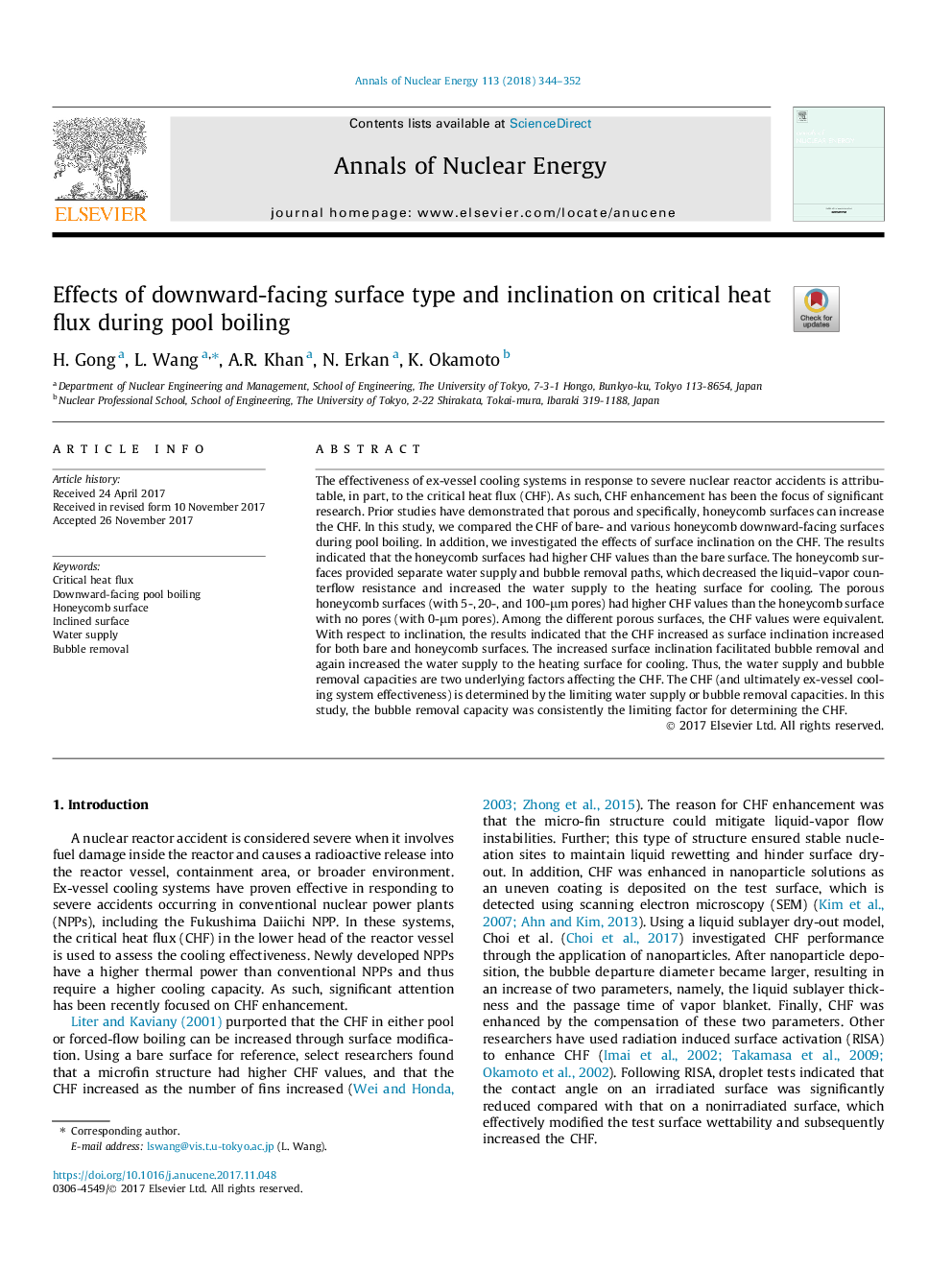| Article ID | Journal | Published Year | Pages | File Type |
|---|---|---|---|---|
| 8067217 | Annals of Nuclear Energy | 2018 | 9 Pages |
Abstract
The effectiveness of ex-vessel cooling systems in response to severe nuclear reactor accidents is attributable, in part, to the critical heat flux (CHF). As such, CHF enhancement has been the focus of significant research. Prior studies have demonstrated that porous and specifically, honeycomb surfaces can increase the CHF. In this study, we compared the CHF of bare- and various honeycomb downward-facing surfaces during pool boiling. In addition, we investigated the effects of surface inclination on the CHF. The results indicated that the honeycomb surfaces had higher CHF values than the bare surface. The honeycomb surfaces provided separate water supply and bubble removal paths, which decreased the liquid-vapor counterflow resistance and increased the water supply to the heating surface for cooling. The porous honeycomb surfaces (with 5-, 20-, and 100-μm pores) had higher CHF values than the honeycomb surface with no pores (with 0-μm pores). Among the different porous surfaces, the CHF values were equivalent. With respect to inclination, the results indicated that the CHF increased as surface inclination increased for both bare and honeycomb surfaces. The increased surface inclination facilitated bubble removal and again increased the water supply to the heating surface for cooling. Thus, the water supply and bubble removal capacities are two underlying factors affecting the CHF. The CHF (and ultimately ex-vessel cooling system effectiveness) is determined by the limiting water supply or bubble removal capacities. In this study, the bubble removal capacity was consistently the limiting factor for determining the CHF.
Related Topics
Physical Sciences and Engineering
Energy
Energy Engineering and Power Technology
Authors
H. Gong, L. Wang, A.R. Khan, N. Erkan, K. Okamoto,
